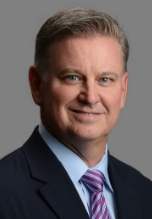Publish Date
Jul 29, 2020
Show Me the Money, But the Right Money Please! Part 1: Where is the Money?
Service / Industry: Commercial Excellence
In our three-part series, “Show Me the Money, But the Right Money Please!” A&M Private Equity Performance Improvement Managing Director, Cliff Hall, discusses the framework behind an effective commercial strategy that drives profitable sales, margin improvement, and cash flow.
In part one, we discuss how understanding cost-to-serve and creating transparency on margins and the market are the foundation. This informs product and pricing strategy, and sales organization structure and process to create an effective commercial strategy that drives profitable sales and cash flow.
The Current Landscape
Given the current global economy – markets and customers in turmoil, shifting business models, and cash strapped vendors and customers – it is time to reset to drive profitable growth integrated with operations to reduce cost and working capital. The recent turmoil that COVID-19 has created, forcing limited face-to-face interaction with customers, offers a prime example that it makes sense to always be reevaluating your go-to-market strategy and to be almost “clinical” in terms of understanding where the money is being made and not made.
Poor or non-existent margin management (the tendency to say “yes” to every customer dollar regardless of profitability and payment terms) also needs to be addressed. Consider giving up some top line by consolidating or eliminating customers, products, or channels, because EBITDA, cash, and working capital can actually see a positive effect from it.
For years, we’ve seen numerous companies feeling squeezed and trimming costs. But, in reality, you can’t cost cut your way to sustainable growth. Though there are often opportunities to spend sales and marketing dollars more effectively, the focus must be on profitable sales, liquidity management, responsiveness, agility, and connecting with customers—not just on cost reduction. In our experience with privately held companies, many are missing opportunities to drive profitable top-line revenues using an effective commercial strategy.
When top-line revenues are increasing, it can be easy to ignore the opportunities for commercial improvement. However, when revenue and/or profitability begin to level off or fall, inefficiencies in the commercial structure and processes are exacerbated and can be a significant drain on cash that should be preserved or more gainfully deployed elsewhere. Carefully managing the cash conversion cycle can be critical to preserving working capital. Often, lenient payment terms given to high growth customers during the growth phase come back to haunt when revenue levels off, putting further pressure on operations and making revenue turnaround even more challenging.


